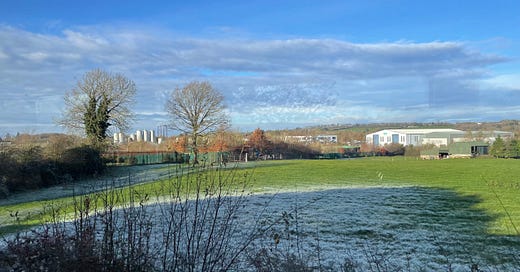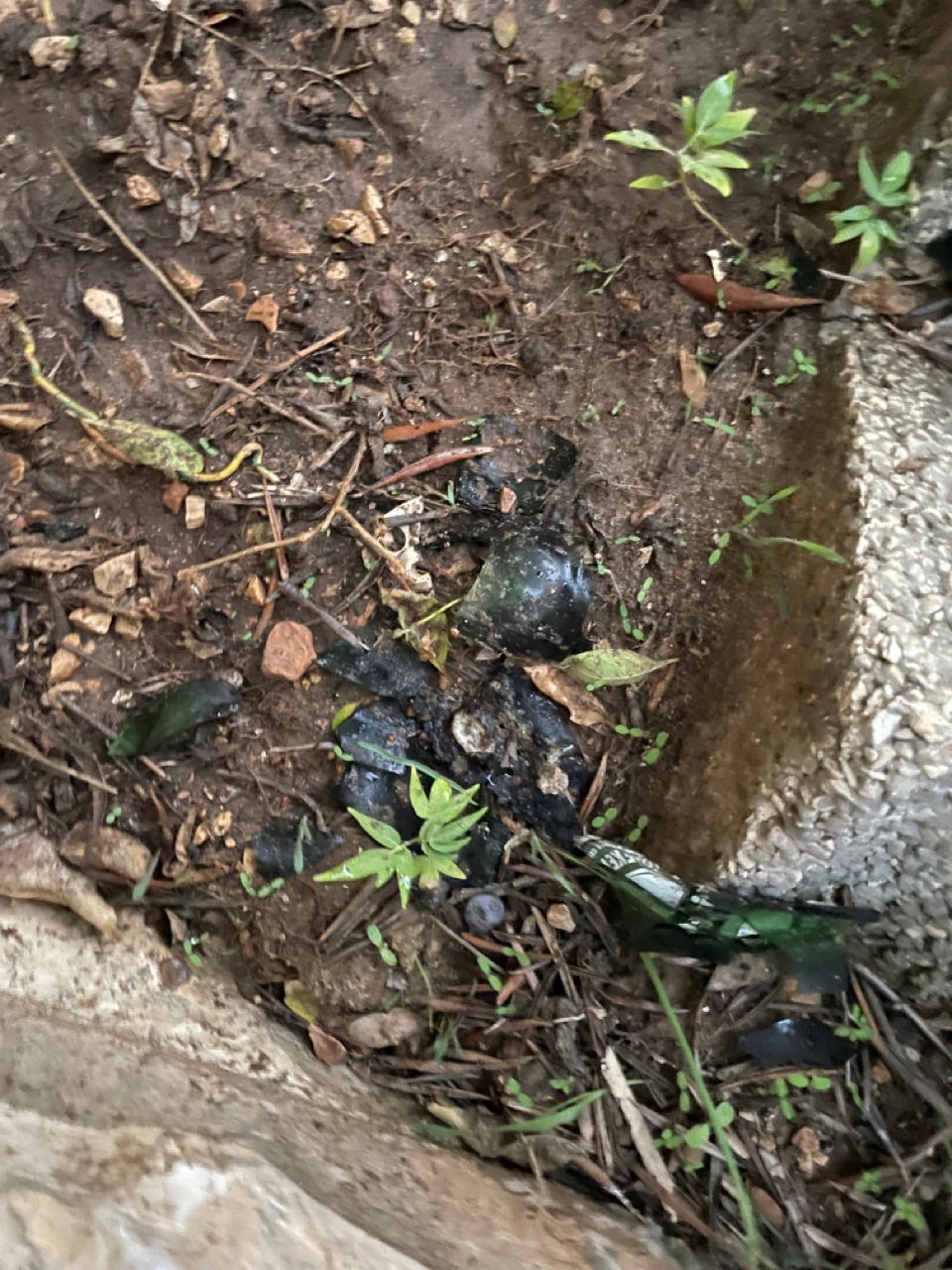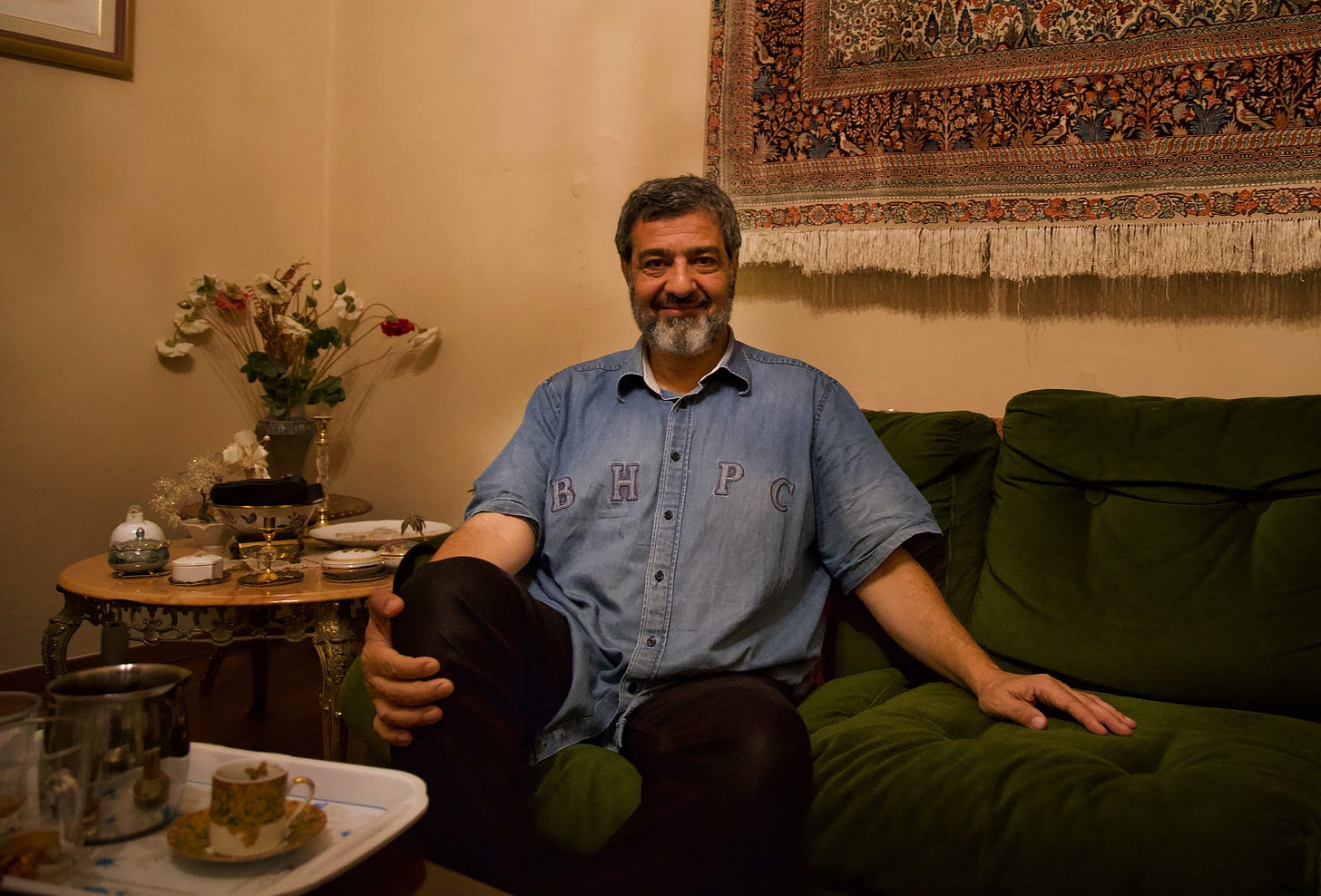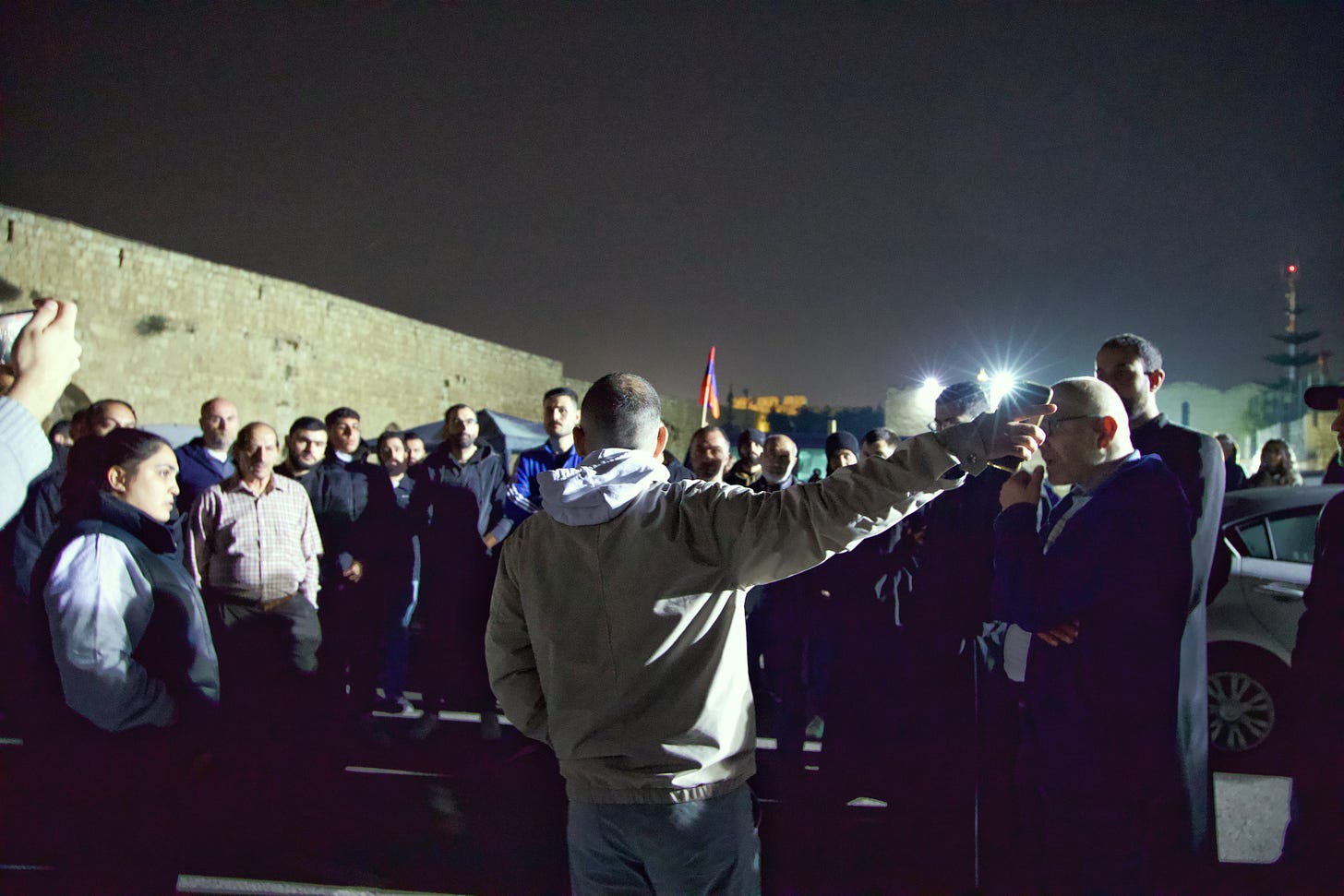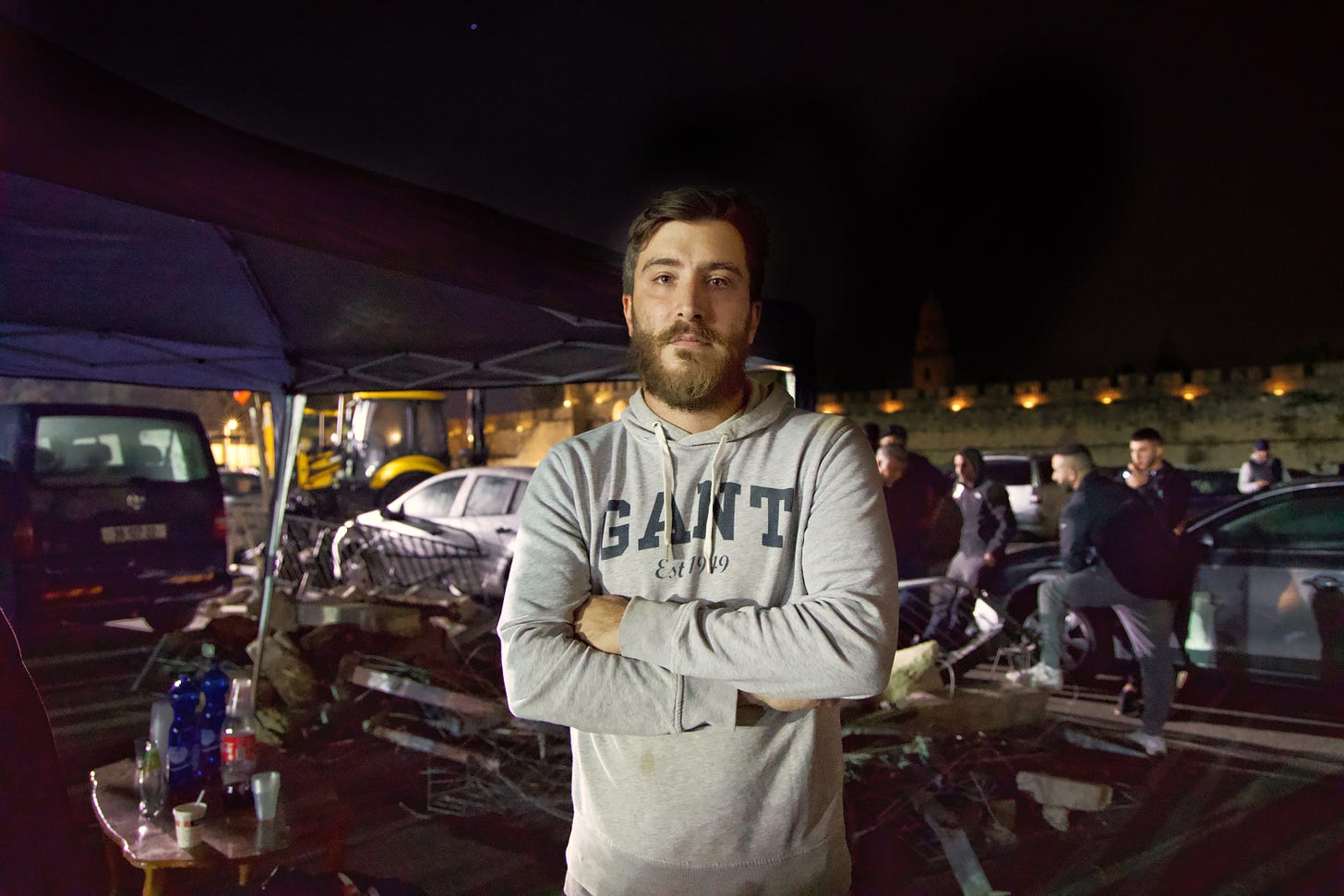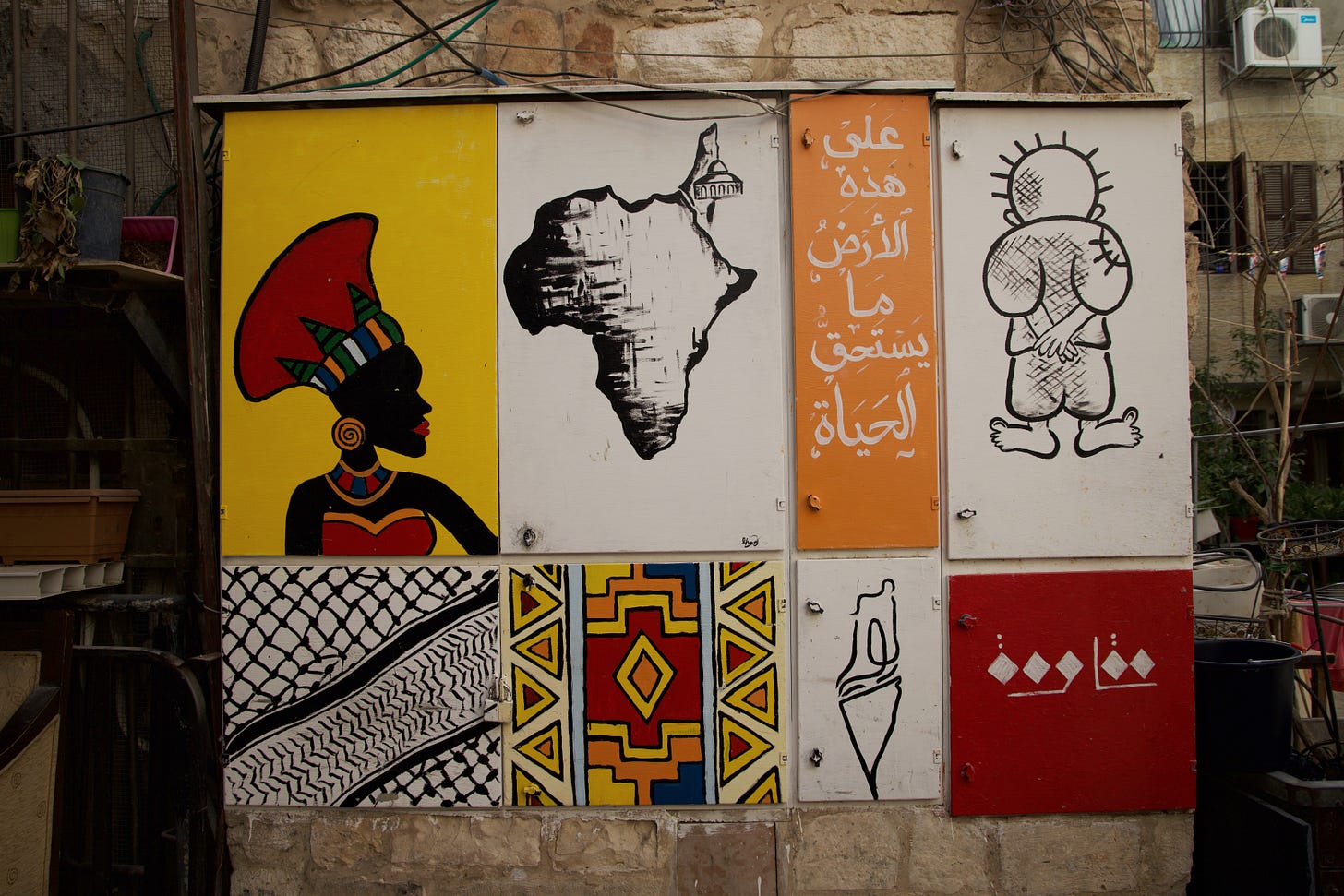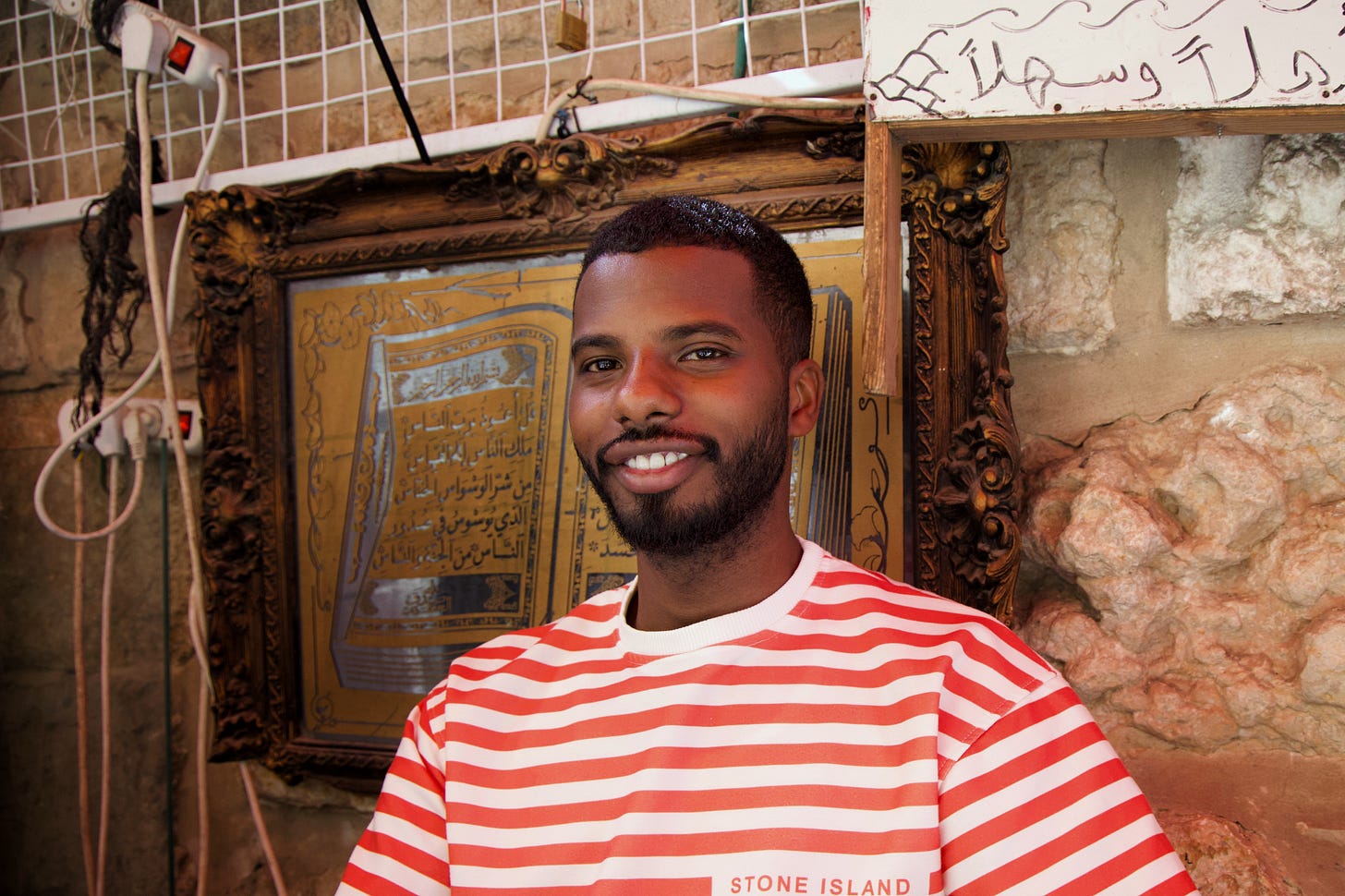Someone threw a molotov cocktail at a Palestinian home in East Jerusalem but it wasn't a big enough story to write about
Hello from a train running past icy fields in Ireland,
10 days into the start of the Israeli-Hamas war I was walking on a street in East Jerusalem where I noticed the windows of several cars were damaged and there was glass on the street. I began chatting with one of the owners of the cars who described how local youths from nearby Israeli settlements in East Jerusalem (which is occupied territory under international law) routinely came by and scrapped cars and smashed windows of cars owned by Palestinians.
A few days before one man had come at night and thrown molotov cocktails at several houses where families were sleeping. I spoke to one of the owners, Mounir, and looked at the charred glass where the molotov cocktail had fallen a few nights before.
You can see the attack on the street here.
He invited me into for tea, served by a brother with an intellectual disability who he cared for after his father died the year before.
Mounir had grown up in East Jerusalem and said in the 60s and 70s it was a much more vibrant place with less visible signs of an occupation. Some of the businesses were owned by Gazans who could easily drive from the coast to Jerusalem and on to Ramallah, if they wanted. But for a few fleeting years of promise in the 90s, every decade of the occupation has seen conditions worsen for Palestinians whose families scattered across the West Bank, Jerusalem, Israel and Gaza face more obstacles than ever to see each other.
Mounir has a cousin in Gaza with a health condition where her lungs fill with fluid and every week before the war she went to the hospital to have it drained. He described how she was now drowning in her own body in Gaza, unable to access treatment while living with no privacy with 40 other family members. I sometimes wonder what happened to her - it seems intrusive to message Mounir who is unable to offer his cousin any help in Gaza, where the completely avoidable death of one woman is unlikely to make headlines.
I suggested doing a story about Mounir and his home being targeted with a molotov cocktail and how miserable life has become for Palestinian families divided across the occupied territories to an editor - but they said it wasn’t a big enough for a feature piece during the war.
As an Irish journalist who mostly does features (rather than news reports) for Irish newspapers I don’t report on ever story - or even necessarily every major story. It’s more about trying to find a big personal story that will catch readers attention and emotions or an underreported but important angle, or an Irish angle.
The story of the threat facing Jerusalem’s Armenian community was big enough to publish an article about. You can read it here.
If you’re interested in learning more about the different communities that live in Jerusalem’s old city you can read this piece from September that I wrote about the Afro-Palestinian community here.
I also spoke to Monocle earlier in the weak about the latest truce extension in Gaza (which is no over, as we’ve seen from the casualties already being reported) and the conditions facing both hostages and Palestinian prisoners.
Somethings worth reading this week
‘A mass assassination factory’: Inside Israel’s calculated bombing of Gaza - Permissive airstrikes on non-military targets and the use of an artificial intelligence system have enabled the Israeli army to carry out its deadliest war on Gaza, a +972 and Local Call investigation reveals.
‘Hamas is not as popular in Gaza as it seems. But Israel’s tactics will ensure their survival’ by Ahmed Fouad Alkhatib in The Forward
The EU plans to give Israel €18m in development funding. Many in Brussels aren’t happy by Naomi O’Leary in The Irish Times
If there are any questions you have or anything you’d like to hear more about, let me know!
Hannah

